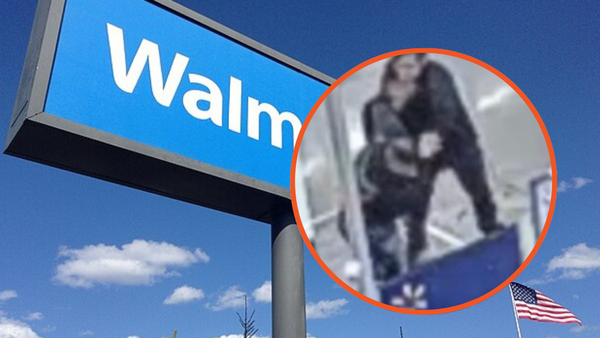Boeing announced internally Monday morning that it will set up a fourth 737 MAX assembly line inside its increasingly empty widebody jet plant in Everett.
The move, adding to the three existing MAX assembly lines in Renton, will make use of the space freed up in Everett by ending the 747 and 787 production.
It's the first expansion of work in Washington state since Boeing opened its advanced composite center in Everett for fabricating the 777X wings in 2016 — and this time done without the threats Boeing issued then of moving work elsewhere unless the Machinists' union granted concessions.
In a message to employees, Stan Deal, CEO of Boeing Commercial Airplanes, cited "the availability of highly skilled workers and factory space" as factors in the decision.
"This announcement underscores our commitment to the state and to Washington workers," Deal said.
It's certainly a lifeline for Boeing's Everett workers, who have seen job prospects steadily shrink. It's unclear if it will add many jobs, though it will surely preserve jobs.
"There may be incremental job gains," Boeing said in a statement. "But in general, this additional line allows us to keep our current team even with the end of 747 production."
John Monroe, a former Boeing executive in Everett who now works to promote aerospace jobs and economic development for the region, said it's "very good news for Snohomish County."
"We've got skills up here that need to be utilized," Monroe said. "And if you don't use them, you lose them. I'm excited."
Jon Holden, district president of the International Association of Machinists Local 751, in an interview said Boeing's decision is "good for our members."
"It's a positive thing," Holden said. "It's important that they maximize the use of the facility and the workforce there."
The new assembly line will provide Boeing capacity to ramp up 737 MAX production to try to catch up to the production rate of the Airbus A320 jet family.
Deal told employees that the new MAX line will start operating "beginning in the second half of 2024."
"To be clear, we are not taking the 737 out of Renton — just adding capacity to capture customer demand," Deal told employees. "Most of our Renton 737 MAX teammates will remain in Renton as we reactivate our third line and continue production on the other two lines there."
"A small group, along with some Everett teammates and some new hires, will help us open this fourth line, known as the North Line," he said.
The MAX workers in Everett will have their managers on site, who will report to the main MAX program office in Renton.
Boeing said last week it will be hiring 10,000 people this year. A large portion of that hiring will likely be for gearing up 737 MAX production.
Using the space in Everett
Deal told employees the new MAX production line will be set up in what used to be the 787 assembly bay until Boeing consolidated production of that airplane in North Charleston, South Carolina, in early 2021.
The loss of the 787 assembly line was followed last month by the closure of the 747 line, as that jet program came to an end after more than 50 years of production. The final 747 will be delivered Tuesday.
That leaves only the 767 and 777 lines inside the giant Everett assembly building, the largest by volume in the world.
The 767 is an aging jet program, with only freighters and military tankers being produced.
And the 777 line is moving slowly. Boeing is building only 777 freighters for now as the new 777X is delayed until 2025. In any case, that big new jet won't have a high production rate for years.
So the news of high-rate MAX production opening up is a significant boost for Everett.
In the assembly bay now earmarked for the MAX, where mechanics have been busily reworking the stored 787s to fix fuselage defects, that work will move over to the empty 747 bay.
Boeing is also doing 787 rework in a separate smaller building south of its jet delivery center on Paine Field in Everett.
Ron Epstein, an industry analyst with Bank of America, said a major factor in the decision has to be Boeing's need to generate revenue out of the giant Everett plant given its high overhead costs.
"They cannot just leave it empty," he said.
Complex delivery logistics
Ever since the Everett plant was built for the 747 in the late 1960s, it has produced only the bigger widebody jets.
Boeing will have to train mechanics who previously worked on the widebody jets in Everett, preparing them to handle the intricacies of the much faster pace of work on the smaller planes.
The Machinists' union's Holden said Boeing shifted between 700 and 1,000 of his Everett-based members to Renton to help with the MAX ramp-up there and will already be up to speed on MAX assembly work.
Those workers will be keen to return to the Everett factory to reduce their commutes.
Setting up the new MAX line will require careful planning.
Boeing will have to replicate in Everett the tooling that's in place in Renton, including structures to hold the fuselages while systems are installed and equipment at each assembly station to join the wings, add the landing gear and complete the airframe.
That could be good news for Electroimpact of Mukilteo, the engineering firm that designed and built much of the tooling in Renton.
Boeing must also adapt its supply chain to deliver parts to Everett as well as Renton.
"This undertaking is significant," Deal wrote. "In addition to preparing the facility, we have begun the process of notifying and preparing our suppliers, customers, unions and employees as we take the necessary steps to create a new line."
It will have to redirect to Everett a portion of the complete 737 MAX fuselages that arrive in the Pacific Northwest by train from Spirit AeroSystems in Wichita, Kansas.
A 2-mile railway spur climbs up a steep gulch from a Mukilteo dock to deliver parts to the Everett plant. Until now that's been used to deliver large parts such 777 fuselage panels shipped across the ocean from suppliers in Japan.
Boeing said Monday no changes to the rail line will be needed to haul the complete MAX fuselages up that same hill.
The MAX wings are fabricated in Renton. Presumably, those can be trucked up I-5 to Everett.
If at some point Boeing decided to make the wings in Everett, too, there's certainly space to do so where the 747 wings were formerly made.
Keeping up with Airbus
Currently, the narrowbody MAX jet is built exclusively in Renton on three separate assembly lines, only two of which are operating as MAX production ramps up slowly.
Because of post-pandemic supply chain issues, Boeing has been struggling to stabilize production at 31 jets per month, well short of the 52 jets per month production rate at the start of 2019 — before the MAX was grounded after two deadly accidents.
Airbus has taken full advantage of the low MAX production rate, steadily raising production of its rival A320 jet family.
Last year, despite supply chain issues, Airbus averaged 43 deliveries of the A320 jet family per month. It is targeting a monthly rate of 65 aircraft in early 2024 and 75 in 2025.
Boeing's fourth MAX line is a response to that accelerating competition and an attempt to claw back some narrowbody jet market share.
Scott Hamilton, founder of aerospace industry analysis firm Leeham.net, said Boeing is already down to about 39% of the market that it formerly split 50/50 with Airbus.
"Boeing must match Airbus rates to stem the erosion of market share," he said.
Deal said the fourth line is designed to increase capacity, especially for later MAX models such as the high-density MAX 8-200 model and the largest model, the MAX 10.
Snohomish County Executive Dave Somers in a statement linked the departure of the 747 jumbo and the pending arrival of the 737 MAX.
"As we say a fond farewell to the Queen of the Skies, we welcome her younger sibling, the 737 MAX," Somers said. "We will continue to be the heart of the global aerospace industry."







